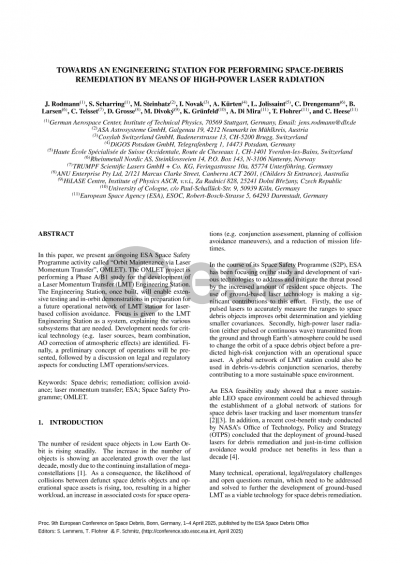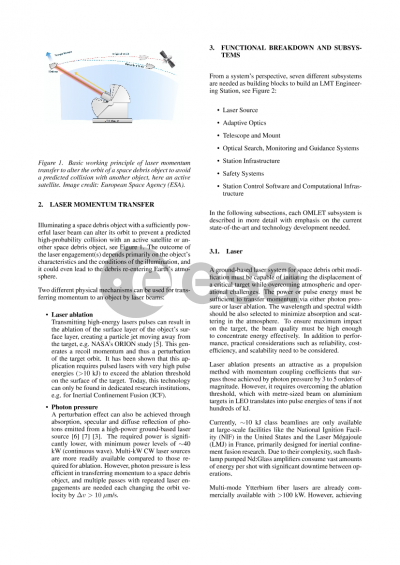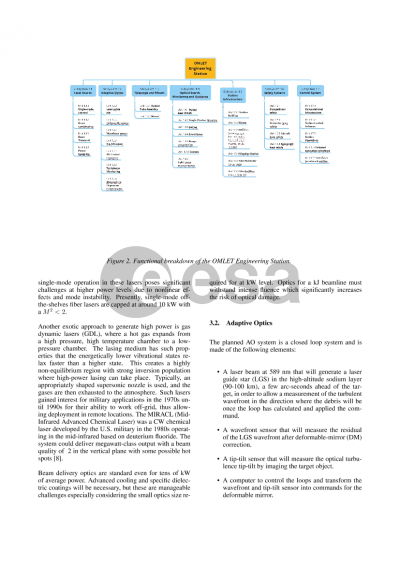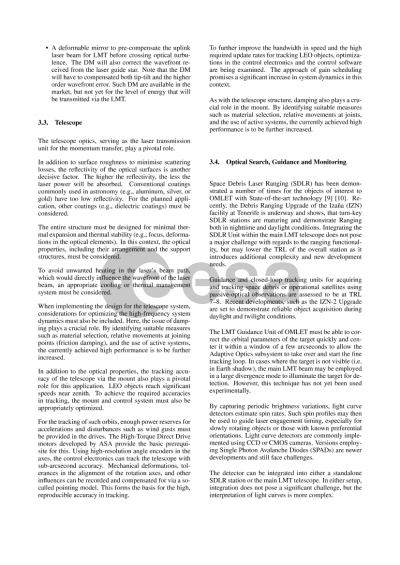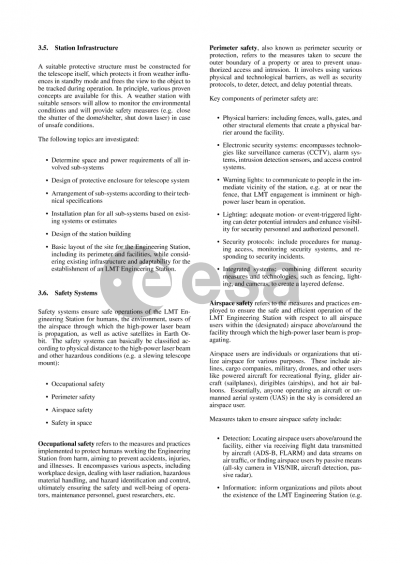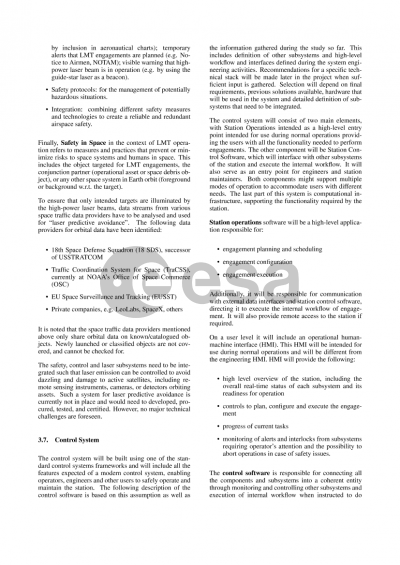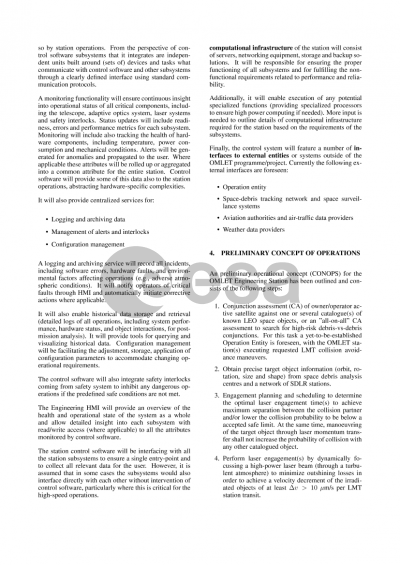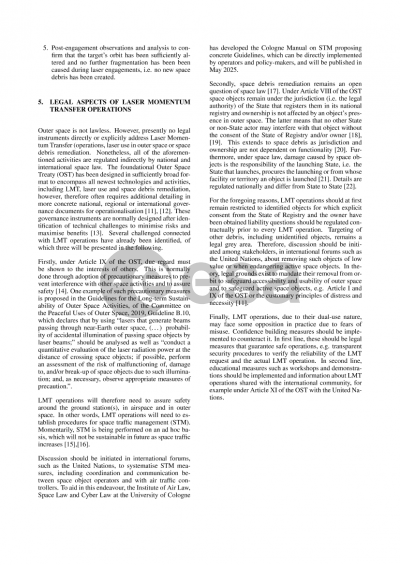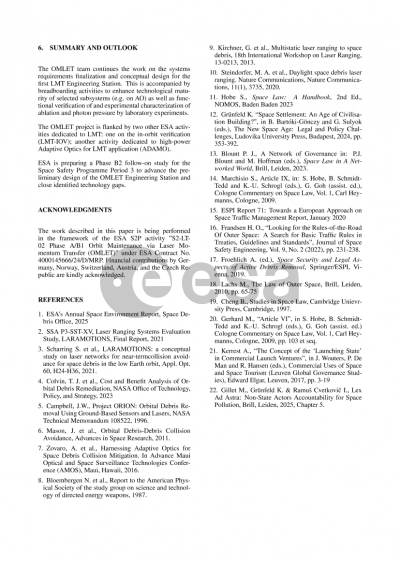Document details

Abstract
The number of resident space objects in Low Earth Orbit is rising steadily. The increase in the number of objects is showing an accelerated growth over the last decade, mostly due to the continuing installation of mega-constellations. As a consequence, the likelihood of collisions between defunct space debris objects and operational space assets is rising, too, resulting in a higher workload, an increase in associated costs for space operations (e.g. conjunction assessment, planning of collision avoidance maneuvers), and a reduction of mission lifetimes.
In the course of its Space Safety Programme (S2P), ESA has been focusing on the study and development of various technologies to address and mitigate the threat posed by the increased amount of resident space objects. The use of ground-based laser technology is making a significant
contribution to this effort. Firstly, the use of pulsed lasers to accurately measure the ranges to space debris objects improves orbit determination and yielding smaller covariances. Secondly, high-power laser radiation (either pulsed or continuous wave) transmitted from the ground and through Earth’s atmosphere could be used to change the orbit of a space debris object before a predicted high-risk conjunction with an operational space asset.
An ESA feasibility study performed by a DLR-led consortium showed that a more sustainable space environment could be achieved through the establishment of a global network of stations for space debris laser tracking and laser momentum transfer (LMT). In addition, a recent cost-benefit study conducted by NASA’s Office of Technology, Policy and Strategy (OTPS) concluded that the deployment of ground-based lasers for debris remediation and just-in-time collision avoidance would produce net benefits in less than a decade. Many technical, operational, and regulatory challenges remain though, and need to be addressed and solved to further the development of LMT as a viable technology for space debris mitigation and remediation.
In this paper, we will present preliminary results from an ongoing ESA S2P activity (titled “Orbit Maintenance via Laser Momentum Transfer”, OMLET) and done by a large DLR-led consortium. The OMLET project is performing a Phase A/B1 study for the development of a Laser Momentum Transfer Engineering Station. The Engineering Station, once built, will enable extensive testing and in-orbit demonstrations in preparation for a future operational laser-based collision avoidance
system. In the subsequent phases of OMLET, the transition to operational services for precise ephemeris data provision and laser-based collision avoidance will be addressed.
Focus will be given to the consolidation of the functional and performance requirements of the Engineering Station system and their flow-down to subsystem level. A trade-off for different system
architectures will be summarized and a baseline solution presented. Development needs for critical technology (e.g. laser sources, beam combination, AO correction of atmospheric effects) will be identified. Preliminary overview of work scope and schedule estimates for the future development of the Engineering Station will be provided. Finally, a preliminary concept of operations will be presented, taking into account legal and regulatory aspects as well as open issues in these areas.
Preview
